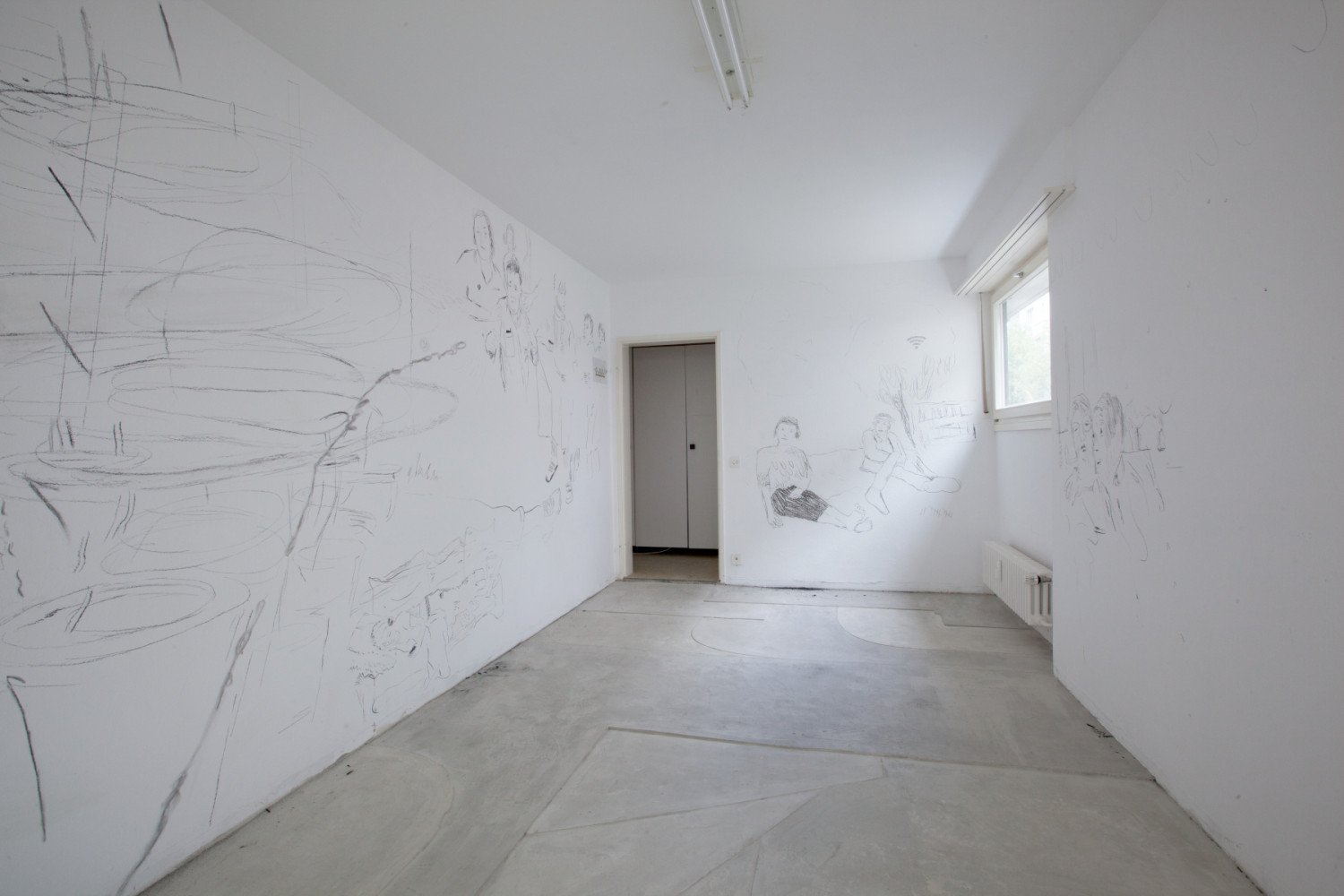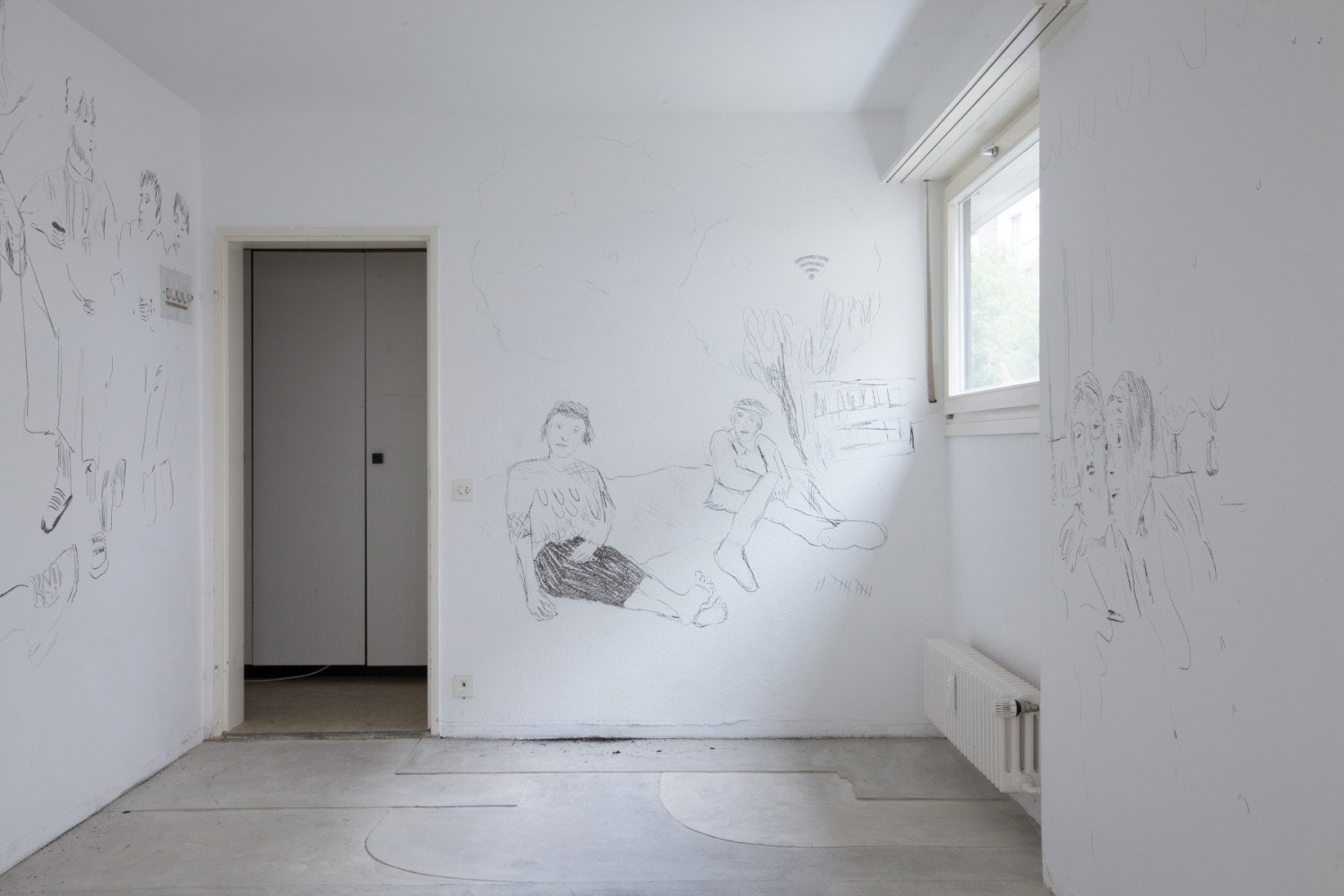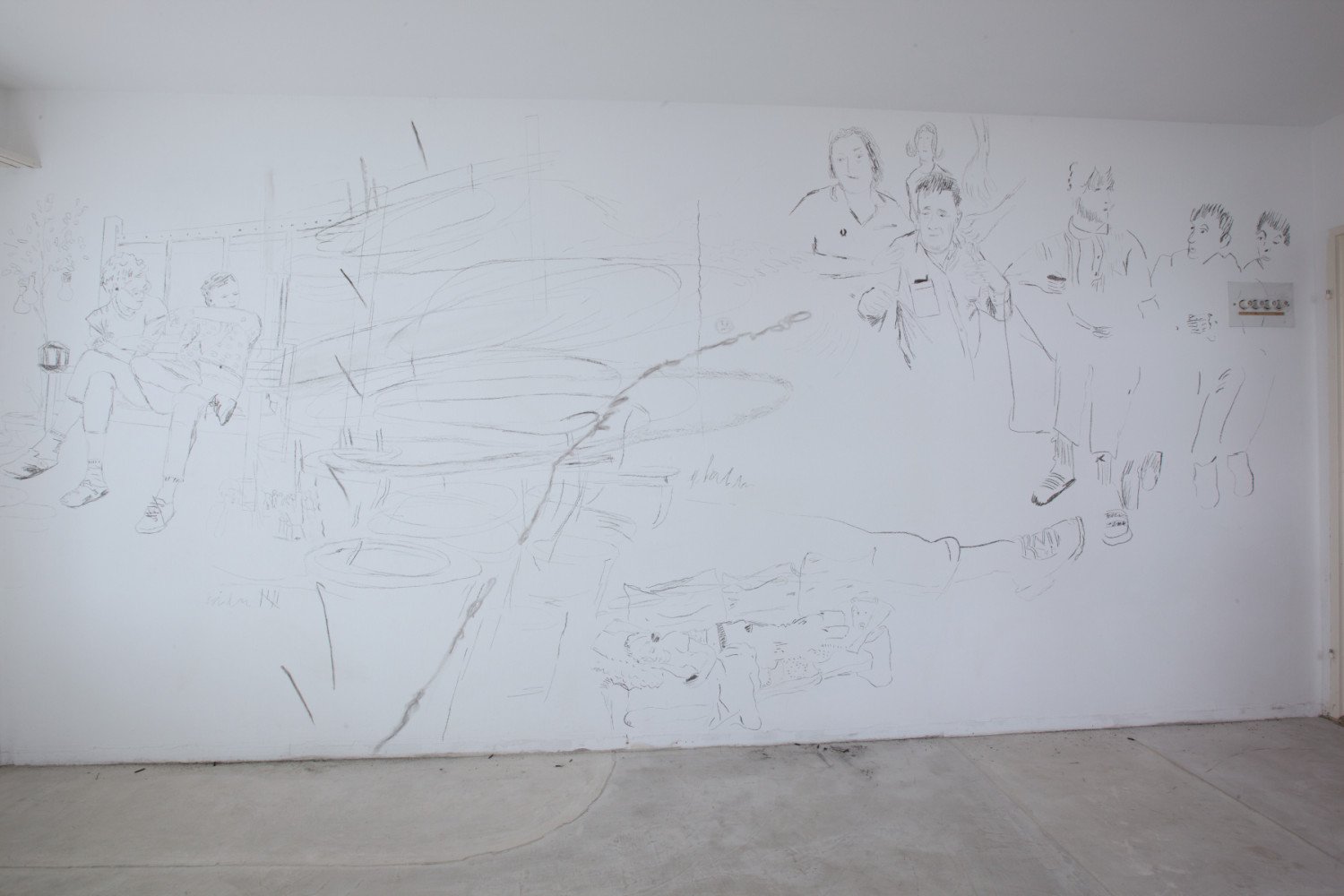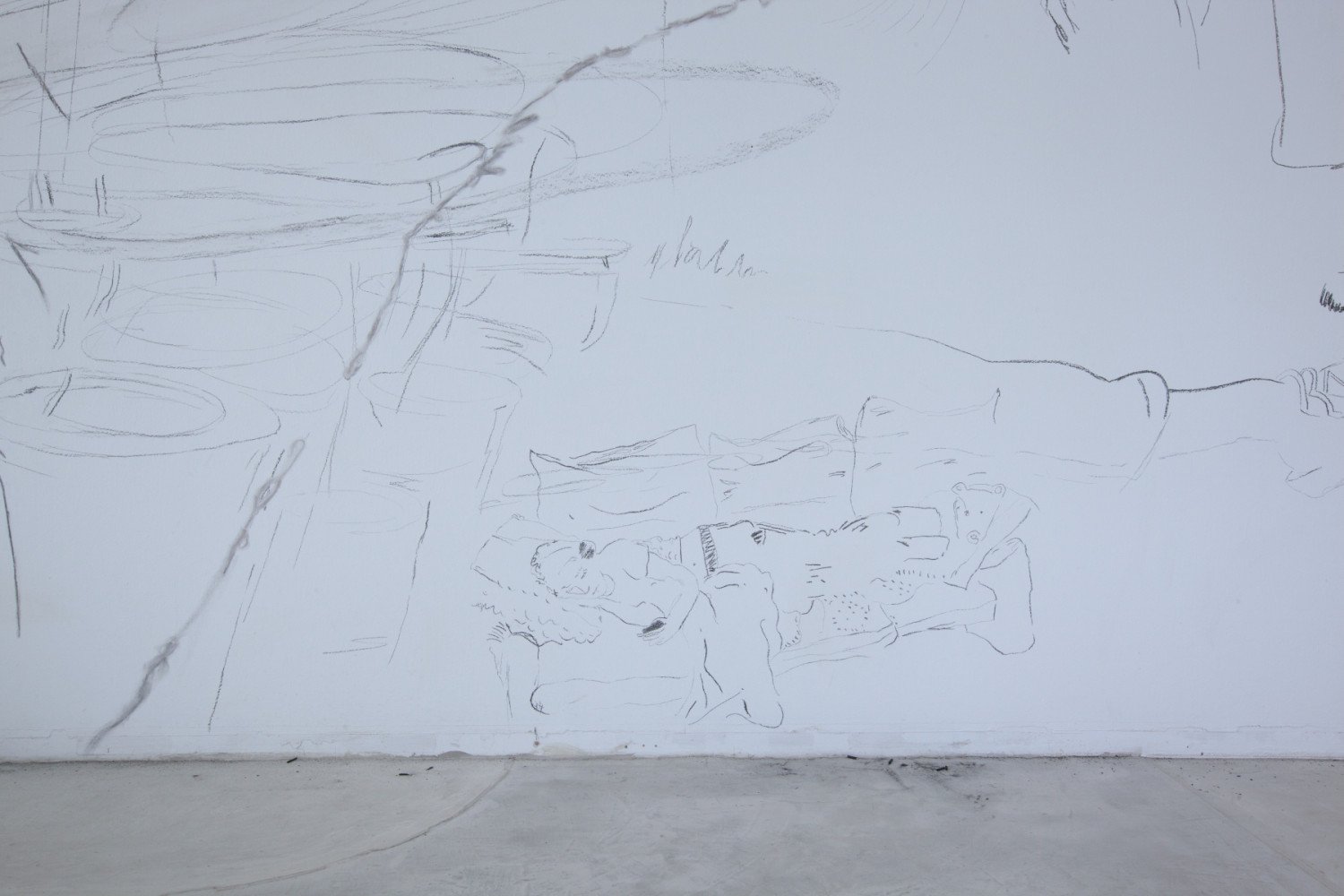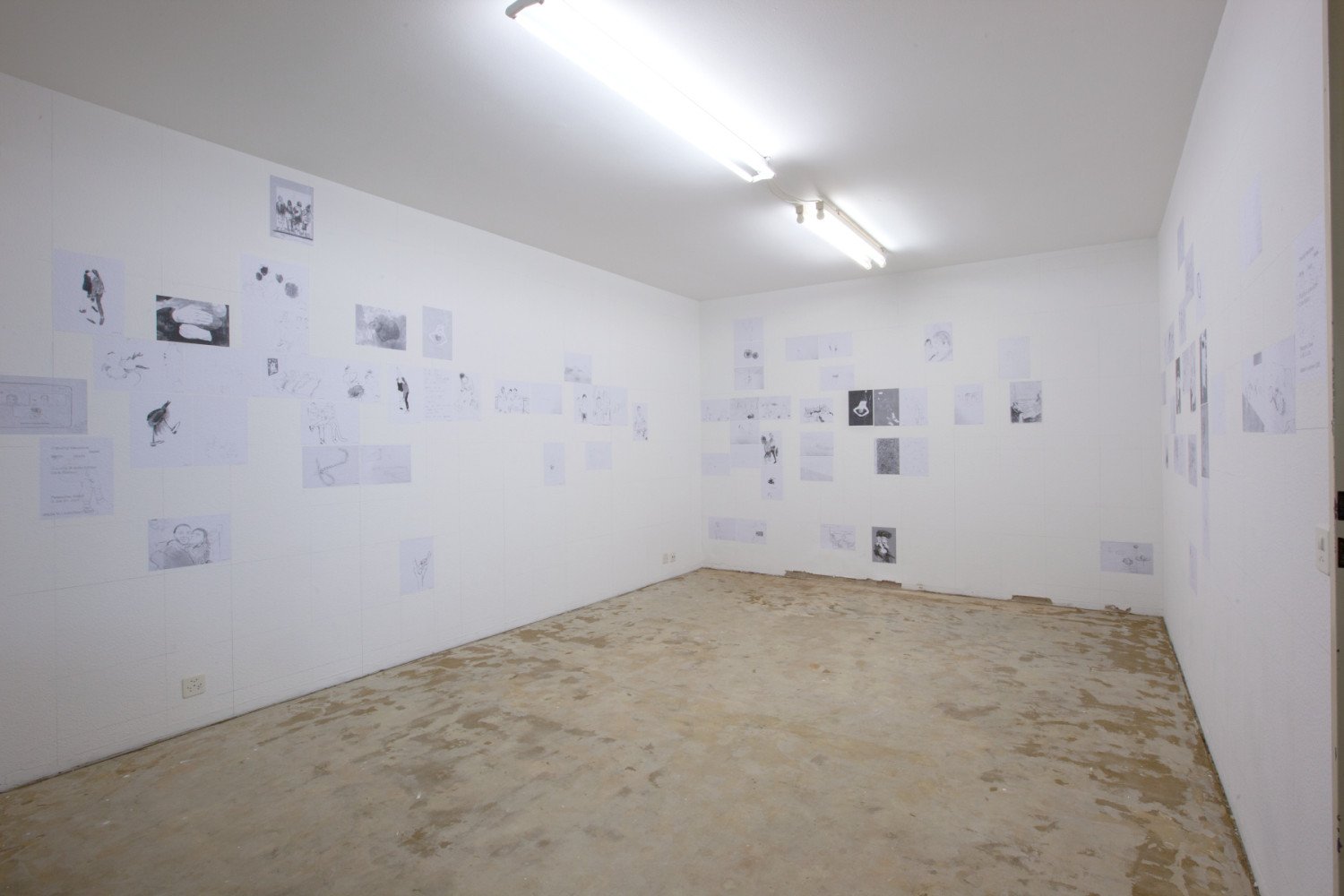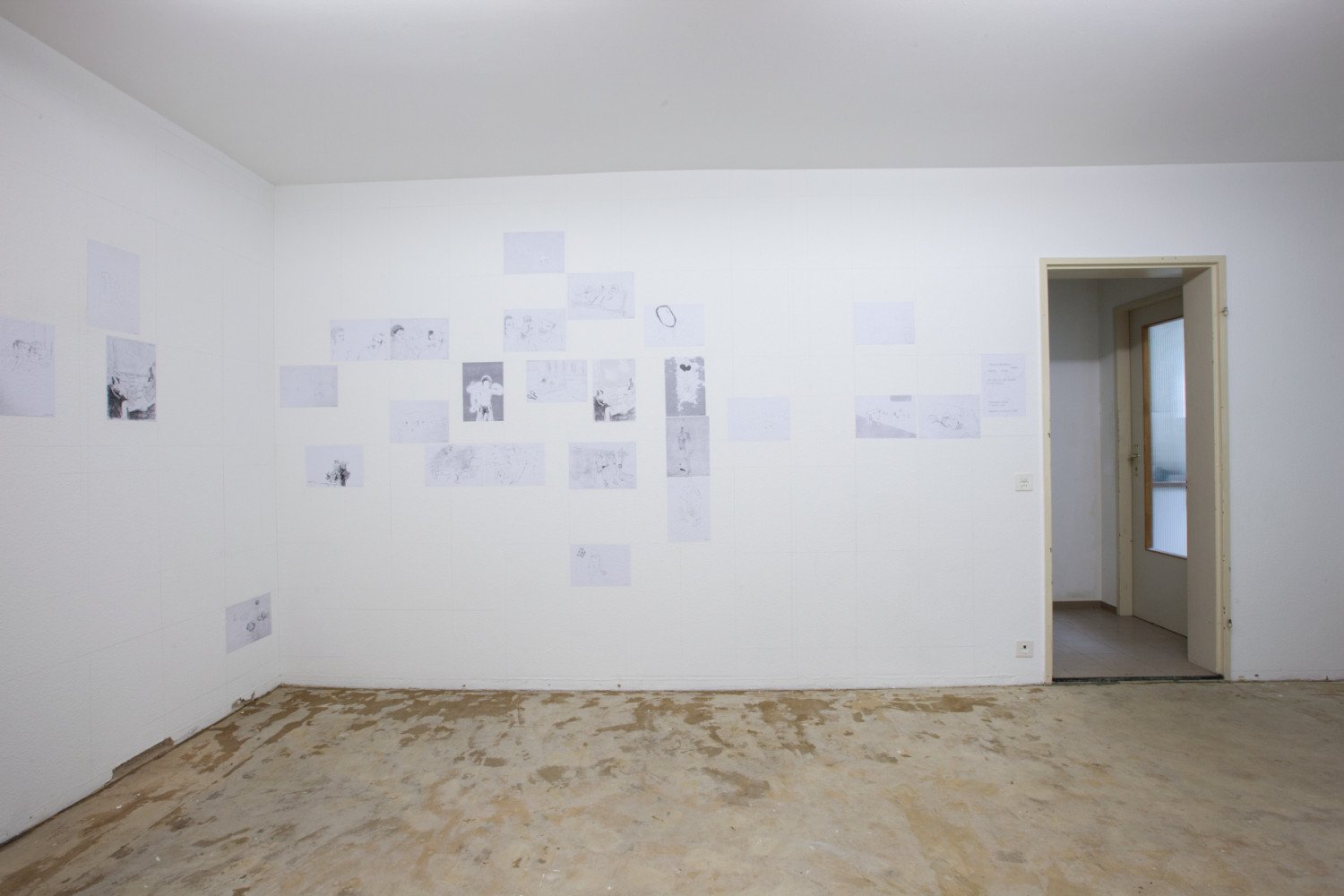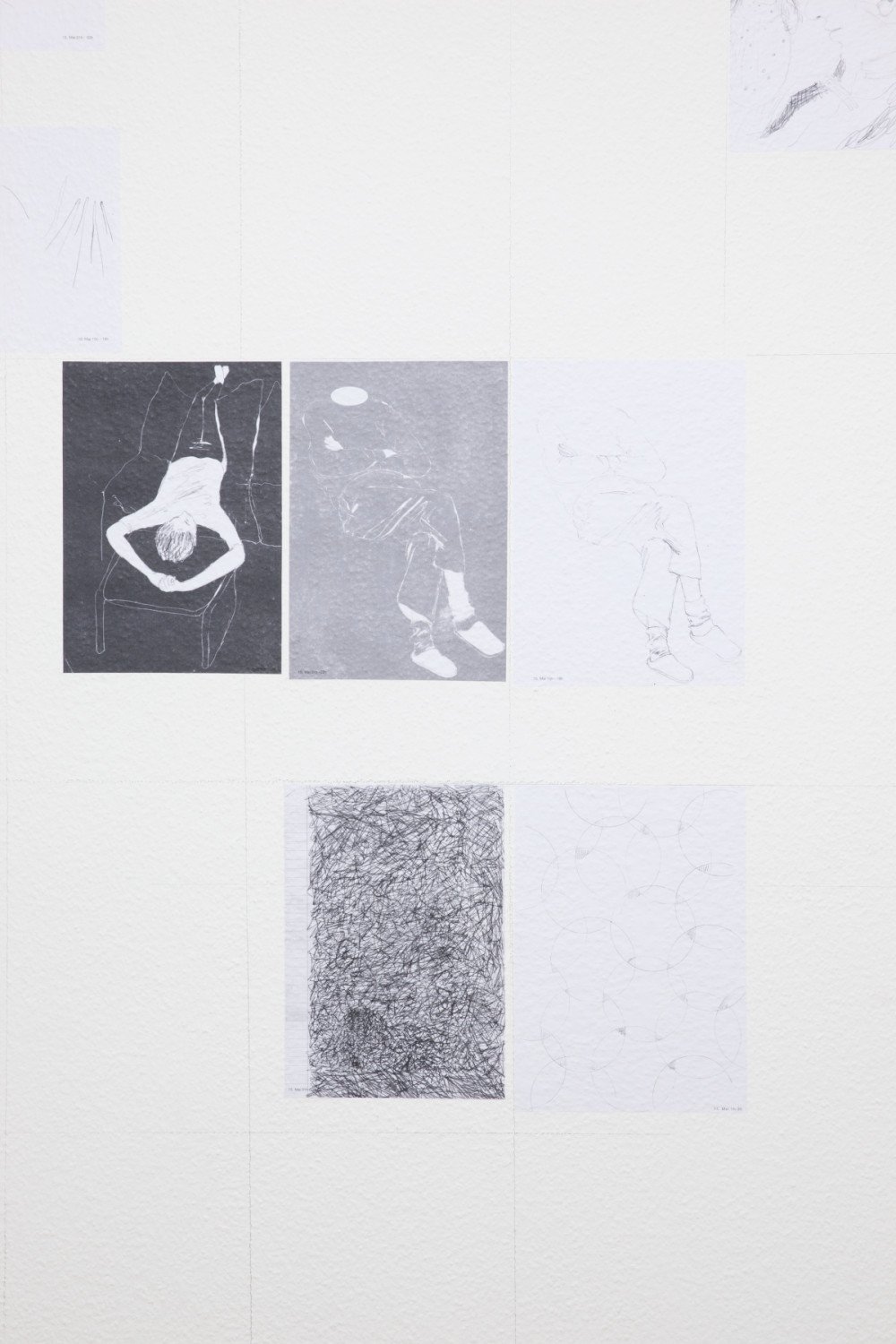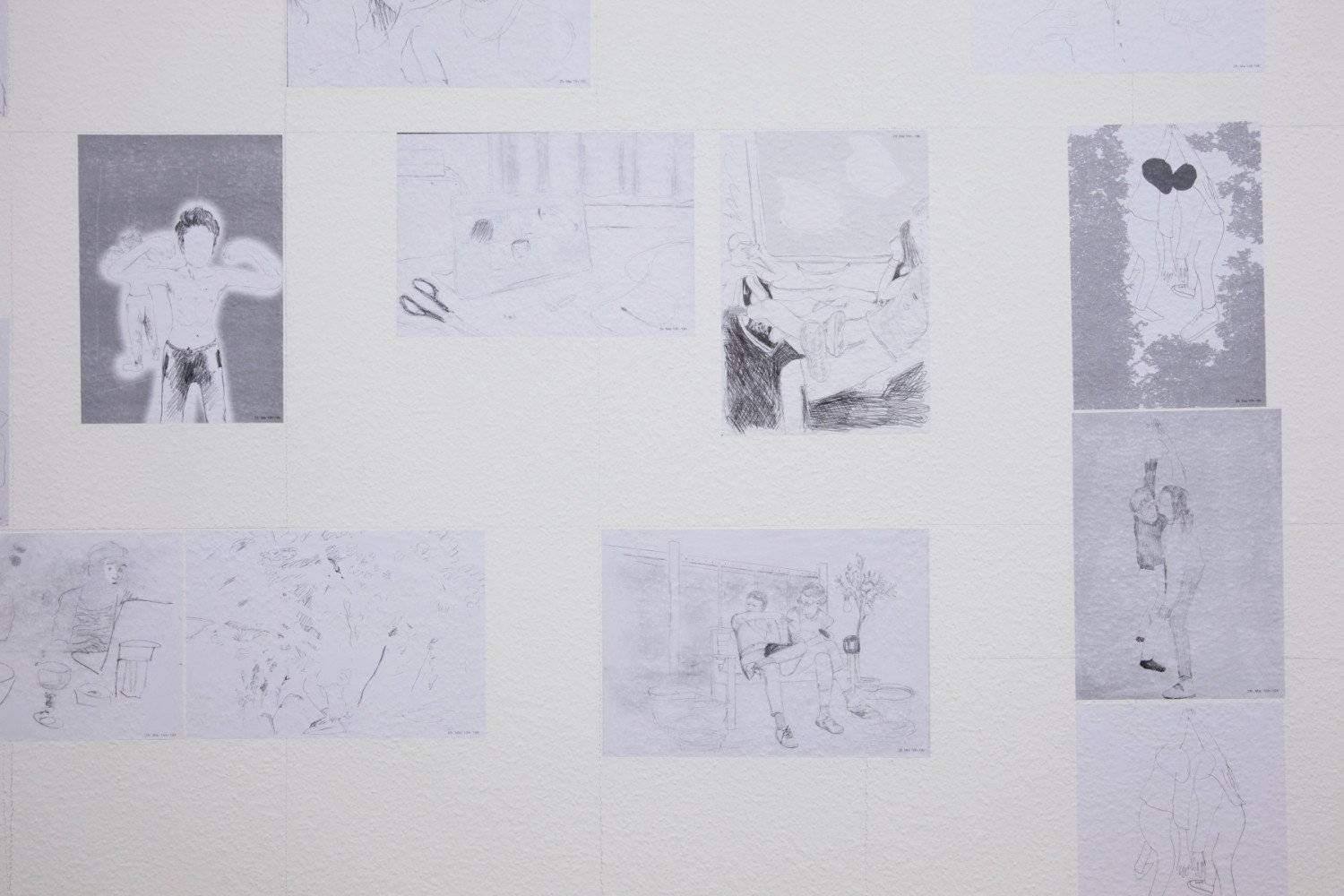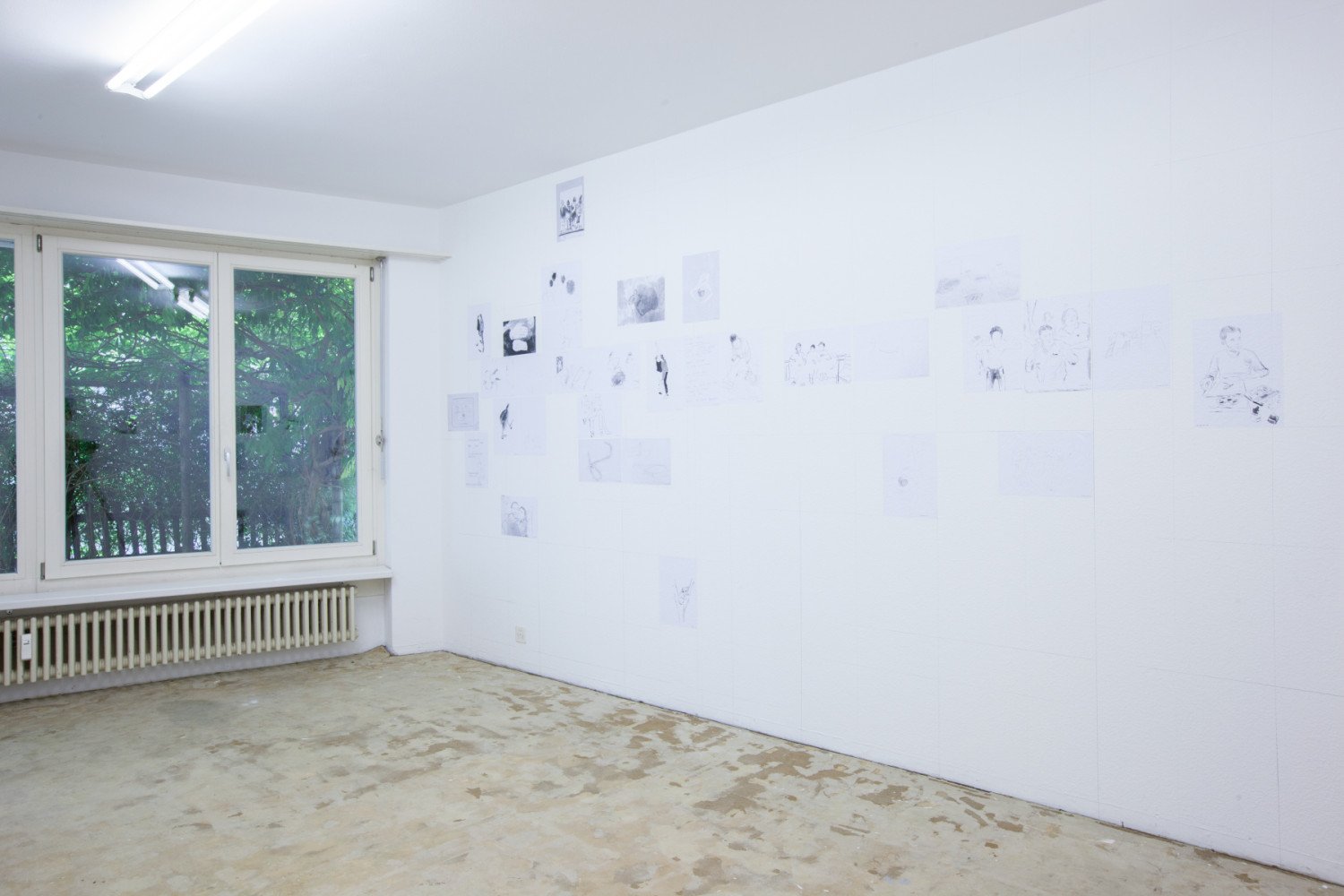Opening: Wed. June 3rd, 2020
Drawing Sessions. Basel Berlin Bude - Palazzina #07 03/06/2020—21/06/2020
Claudia & Julia Müller Zara Idelson
Basel - Berlin – Bude — are the places where the artists Claudia & Julia Müller (*1964 & *1965) and Zara Idelson (*1987) have been living and provide the title for the last exhibition at the Palazzina in 2 Schweizergasse. The lockdown separated the artist duo and Zara Idelson, with each working independently and yet simultaneously across the borders of Switzerland, Germany and Great Britain to create something in common. In this way, they found a solution within the limited possibilities to be able to realize the exhibition and exchange ideas despite all the restrictions. Through a series of digital meetings, which took place at regular intervals before the exhibition, they spent time together in virtual space while drawing.
Personal photographs from a pool of all three smartphone photo libraries were used as templates for their drawing sessions, showing particularly social interactions and encounters between people. The selection of the images was random, but it seems that often the (non-)space between the people in the picture aroused their interest. After all, in recent weeks and months, the awareness of interpersonal contacts and the attention paid to how far away we are from our fellow human beings has become particularly important. The sensitivity for distances is omnipresent, so that when entering the first room, viewers are almost surprised at how close the figures sit to each other on a large-format wall drawing. A combination of different motifs overlap in the black-and-white, ephemeral charcoal drawing. They only encounter each other by being transferred to the wall and thus recharge each other.
Intertwined legs of young people in a train compartment, a couple sitting on a picnic blanket, a woman touching the back of a baby with her hand... In the next room prints in A4 format have been placed directly on the wall and, unlike the first room, the motifs are juxtaposed, not interwoven but each of them working together as part of a large net. The date at the lower right-hand edge arranges the drawings in a temporal sequence within a space-filling grid of
thin pencil lines. This seeds a new narrative, which is not based on the actual taking of the photographs, but corresponds to the time when the drawing was made. The drawings do not always fit into the differently sized pencil rectangles, but rather overlap here and there, lines that interrupt the grid and question the almost calendar-like division by superimposing their own grid over it.
Even though the drawn situations and gestures convey an immediate moment reminiscent of snapshots, they are a filtered, reflected reinterpretation of the selected photographs. Certain areas have been emphasized more strongly, others possibly left out altogether. The motifs can also appear several times in the framework of the abstracted representations, as the artists refer to several identical images. Thus the individual positions, which the title first underlines, blur into a common authorship, within which it is not possible to determine who created which drawing. A "group portrait" of the three illustrates this idea, in that each one draws for herself - caught in a virtual frame and her own private environment - but is united in a superordinate area. This distanced, indirect communication became the only possible dialogue, which nevertheless allowed a form of cooperation to develop.
Claudia & Julia Müller and Zara Idelson, through their precise observations and their feeling for interpersonal spaces and relationships, open up an analytical reference to various everyday and strange situations, which are not only important in times of lockdown.
Text & Photos: Palazzina.

